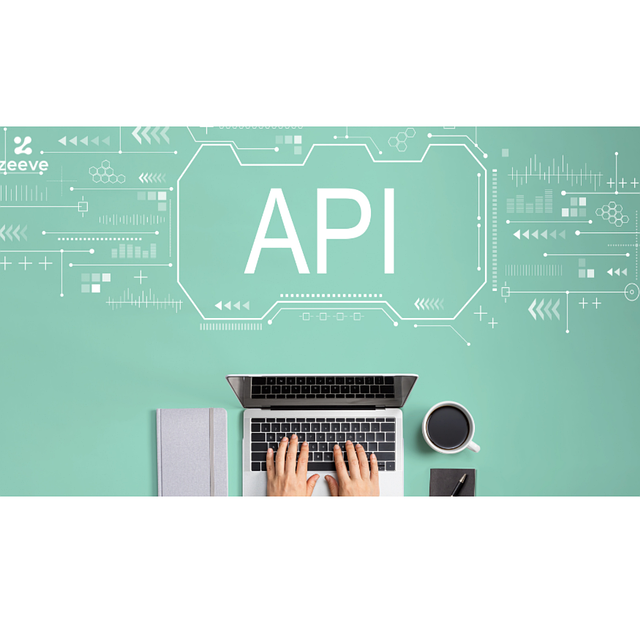Does TradingView Have an API in 2025? An In-Depth Look
Author: Jameson Richman Expert
Published On: 2025-08-02
Prepared by Jameson Richman and our team of experts with over a decade of experience in cryptocurrency and digital asset analysis. Learn more about us.
For traders, developers, fintech innovators, and institutional investors, understanding the availability and capabilities of TradingView’s API in 2025 is crucial for building seamless trading ecosystems, automating strategies, and integrating real-time market data. As one of the most dominant charting and social trading platforms globally, TradingView’s ecosystem significantly influences trading operations, research, and community engagement. This comprehensive analysis explores whether TradingView offers an official API in 2025, delves into alternative methods of data access, examines third-party integrations, and discusses future prospects for API development. Additionally, we consider how the platform’s evolving features, industry trends, and technological advancements impact automation, custom integrations, and institutional workflows.

Introduction to TradingView and Its Significance in the Trading Community
TradingView has established itself as a cornerstone in the retail and professional trading worlds, providing advanced charting tools, social analysis features, and a vast library of indicators. Its user-friendly interface and community-driven environment foster collaboration among traders and analysts. As of 2025, TradingView continues to innovate with features like Pine Script for custom scripting, multi-timeframe analysis, real-time alerts, and social sharing functionalities that facilitate collaborative strategies. Despite its popularity, the platform’s approach to API access remains limited, primarily focusing on embedding capabilities and private integrations rather than offering a broad, publicly accessible API. This restriction influences automation efforts, custom platform development, and institutional-grade integrations, prompting the community and industry stakeholders to explore alternative solutions and advocate for future API enhancements.
Does TradingView Have an Official API in 2025?
As of 2025, TradingView does not provide a comprehensive, publicly available API that allows developers to access core features such as retrieving live market data, managing charts, executing trades, or managing alerts directly through external applications. Their documentation and developer resources are primarily geared toward enterprise partnerships, broker integrations, and embedded widgets rather than open API offerings. Key points include:
- Limited API Functionality: There is no official API for retrieving historical or real-time market data, managing trading positions, or executing orders directly from third-party applications.
- Focus on Embedded Widgets and Community Tools: TradingView offers embeddable widgets and charting tools for websites and dashboards, but these are designed for visualization rather than data extraction or automation.
- Private and Partner-Only APIs: Certain broker integrations and institutional partnerships leverage private APIs internally, but these are not documented or accessible for public or individual developer use.
This limited API landscape constrains full automation and external platform integrations, especially for retail traders seeking to implement algorithmic strategies directly within TradingView. However, ongoing industry trends toward increased automation and AI-driven trading create pressure for TradingView to consider opening up more developer-friendly interfaces in future updates. As of 2025, no official public API has been announced, but speculation and community demand continue to grow.
Alternative Methods to Access TradingView Data and Features
Without an official API, traders and developers turn to several alternative techniques to harness TradingView’s rich analysis tools and community insights. These include:
- Web and Screen Scraping: Automated scripts using tools like Puppeteer or Selenium can extract visual data from TradingView’s web interface. While technically feasible, this approach is fragile—susceptible to website layout changes—and may violate TradingView’s terms of service. It requires ongoing maintenance and is generally discouraged for critical or commercial use.
- Embedding TradingView Widgets: TradingView provides a suite of customizable, embeddable widgets that can be integrated into websites or dashboards via JavaScript. These support multi-timeframe analysis, indicator toggling, and synchronized charts, but do not provide data feeds or order execution capabilities.
- Community Scripts and Open-Source Projects: The developer community has created browser automation scripts, data scraping tools, and semi-API solutions that emulate data access. Examples include custom scripts that monitor alert triggers or simulate user interactions. These are valuable for personal projects but pose security and compliance risks, and require technical expertise.
- Alerts and Webhooks: TradingView allows users to set custom alerts that trigger webhook URLs. These alerts can send notifications or signals to external systems, such as trading bots, order management systems, or automation platforms. While not a full API, this feature enables semi-automated workflows, particularly when combined with third-party services like Zapier or custom middleware.
It is essential for users to understand that these methods—particularly scraping and automation—may violate TradingView’s terms of service, potentially risking account suspension or data security breaches. They are best suited for experimentation, research, or non-critical automation workflows.

Third-Party APIs and Data Providers
Given the lack of a comprehensive TradingView API, many traders rely on third-party APIs and data providers to enhance their trading workflows. These external APIs facilitate data retrieval, order execution, and portfolio management, often integrating signals generated from TradingView analysis. Notable providers include:
- Binance API: Offers extensive access to market data, order placement, account info, and trading execution. Traders often combine Binance API data with TradingView alerts for semi-automated trading systems.
- Mexc API: Provides real-time data streaming, order management, and portfolio tracking, supporting integrations with TradingView-based strategies.
- Bitget API: Focused on derivatives trading with rapid data feeds and order routing, compatible with TradingView signals for fast execution.
- Bybit API: High-performance APIs for spot and derivatives trading, enabling fast order execution based on TradingView alerts or signals.
While these APIs do not replace a dedicated TradingView API, integrating them with alert systems, custom scripts, or automation platforms allows traders to implement semi-automated strategies that leverage TradingView’s analysis alongside exchange functionalities. This hybrid approach remains prevalent among retail traders and small institutions.
Future Prospects for TradingView APIs in 2025
Despite the current limitations, industry insiders, analysts, and community discussions suggest that TradingView is likely to introduce more open API capabilities in the near future, driven by demand from retail users and institutional clients. Potential developments include:
- Official Public API: A comprehensive API providing programmatic access to market data, chart management, alert control, and order execution—similar to platforms like MetaTrader, Interactive Brokers, or Alpaca—would revolutionize automation and custom strategy deployment.
- Deeper Brokerage Integration: Seamless API connections with multiple brokerages would enable one-click trading directly from TradingView, reducing latency and improving execution efficiency.
- Advanced Scripting & Strategy Deployment: APIs to deploy, backtest, and manage strategies written in Pine Script or other languages, with live trading and performance analytics, would greatly benefit professional traders and quant firms.
- SDKs & Ecosystem Tools: Offering Software Development Kits, plugins, and APIs to third-party developers could foster a vibrant ecosystem of custom tools, integrations, and extensions, similar to what MetaTrader or Thinkorswim offer.
The rise of AI, increased automation, and institutional demand are likely to accelerate these developments, making TradingView more accessible for automated trading workflows.
How Traders and Developers Can Prepare for the Future
Proactive preparation can position traders and developers to leverage upcoming API features and platform enhancements effectively. Strategies include:
- Master Current Tools: Deepen expertise in Pine Script, multi-chart setups, alert configurations, and social features. Resources such as this comprehensive guide can accelerate skill development.
- Enhance Integration Skills: Learn how to work with exchange APIs, backtesting frameworks, and automation platforms (e.g., Zapier, IFTTT, custom Python or JavaScript scripts) to build robust workflows that could be integrated with TradingView alerts once official APIs are available.
- Stay Updated on Platform Developments: Follow TradingView’s official blog, participate in community forums, and monitor industry news to catch early signals of API releases or new integration features.
- Invest in Automation & Scripting: Cultivate skills in Python, JavaScript, and browser automation tools to be ready for API releases and streamline manual workflows in the meantime.

Conclusion
In 2025, TradingView continues to excel as a visualization and social analysis platform but does not yet offer a comprehensive public API for full automation. Its ecosystem relies heavily on embedded widgets, community-driven scripts, third-party APIs, and alert-based semi-automation. While full-scale automation remains limited, ongoing platform improvements, community innovation, and industry trends suggest that a more open API environment is on the horizon. Future developments—such as comprehensive APIs, enhanced broker integrations, and scripting capabilities—promise to transform TradingView into a more automation-friendly platform. Staying informed, building technical skills, and leveraging current tools will ensure traders and developers remain prepared to capitalize on these upcoming features.
For further insights into market trends, crypto predictions, and advanced trading techniques, explore resources like Crypto News XRP Price Prediction for 2025, Bitcoin Bottom 2026, and Forex Trading Halal in Shia Islam.